One day Wes wrote to me:
P.S. - I also have a shot of the Micro Dinghy I made form some scraps I had left over from another project, that one is 57 1/4" in total length. It's not very practical but very fun to play with. Naturally with such steep side she's very wobbly but surprisingly fast in the water.
The above notion in the
Portuguese Style Dinghy
picture
gallery
has aroused some interest.
What about free plans for a Micro Portuguese
Dinghy?
Well, why not?
How about something like this?
I've increased the total length a bit, to "full" (heh, heh) 60" - 5' (152 cm).
And added some sheer and curvature to the sides. For better Portuguese looks and
for more buoyancy towards the bow.
Basically, however, this is like the Micro Dinghy above.
All parts can be
gotten out of a single sheet of 1/4" (6.5 mm) plywood. Or pieces of scrap plywood.
Her maximum beam is about 49" (125 cm), just above 4'.
Her draught, when loaded with 250 lbs (115 kg), is about 6" (15 cm).
And freeboard at the same time about 8" (20 cm).
Stabliltywise she should be in the same ball park with the
Half Pea.
According to calculations, that is.
I haven't built a prototype... Not yet ;-)
A word of warning, however!
Anything this small is not a proper boat, just a beach toy.
All warnings and precautions given in the end of the
main page apply especially to
things like this one.
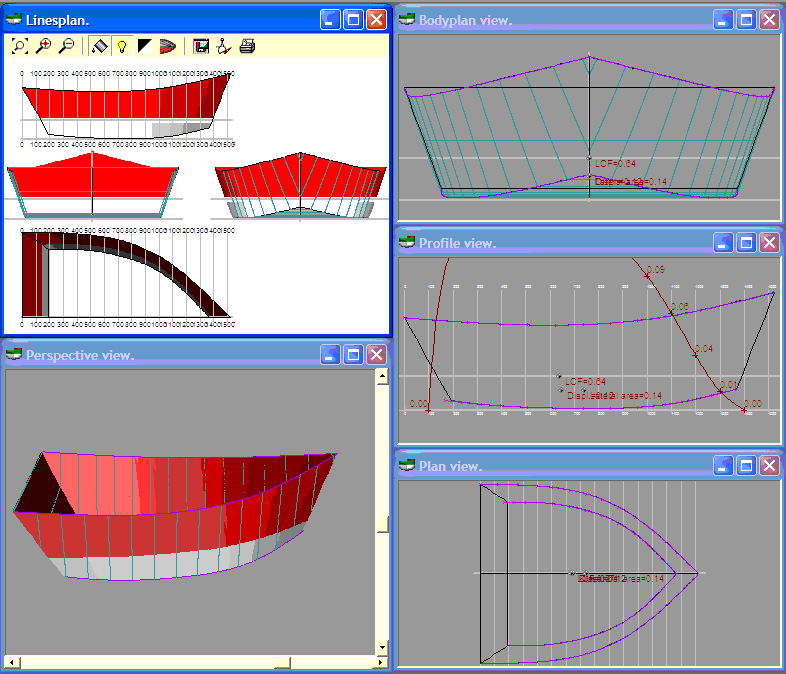
First, cut two sides like this. The blue line indicates the final position of a single frame.

Then, cut a transom like this.
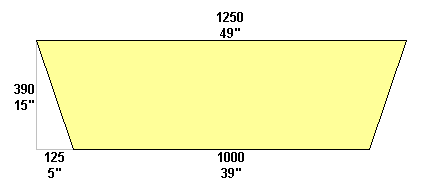
You also need to assemble a single frame like this. Any board sized 1/2" to 1" (12-25 mm) thick times 3" to 4" (75-100 mm) wide would be suitable.
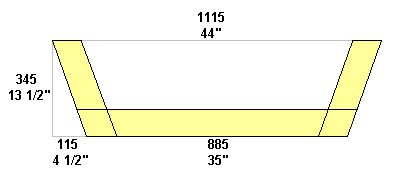
If you cut the sides and transom out of a single plywood like this there will just be enough good plywood left for the bottom.
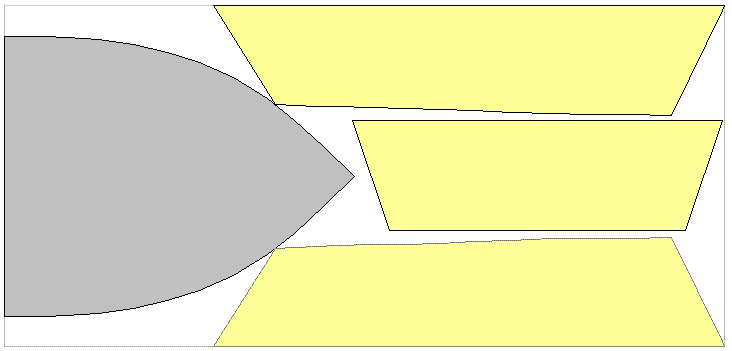
A seat is glued on top of the frame cross member in such a way, that the transom side edge of the seat is about 34" (86 cm) from the point of the bow, or alternatively 26" (66 cm) from the upper edge of the transom.
The oarlocks are fixed to the gunwale in the usual manner, about 12" (30 cm) back from the rear edge of the rowing seat.
All distances are measured along an imagined horizontal line.
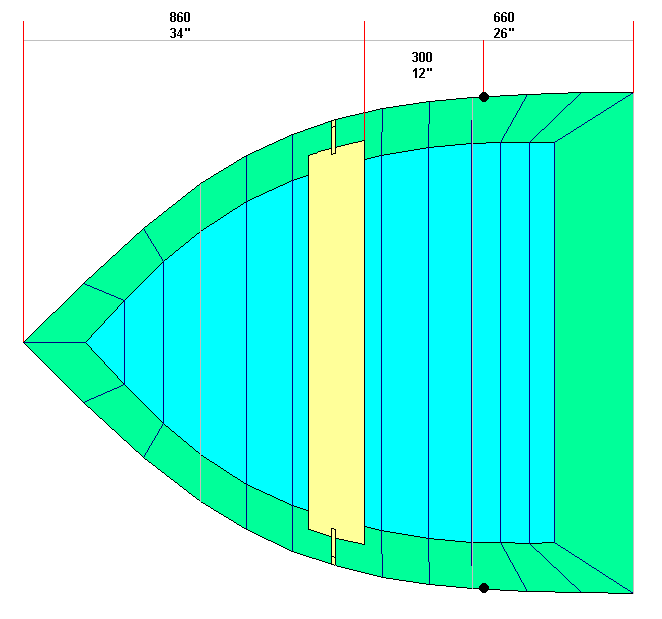
A suitable oar length for this beach toy is 7 1/2' (225 cm), using a 4" (10 cm) oar handle overlap.
The assembly goes pretty much along the same paths as that of the Portuguese Style Dinghy.